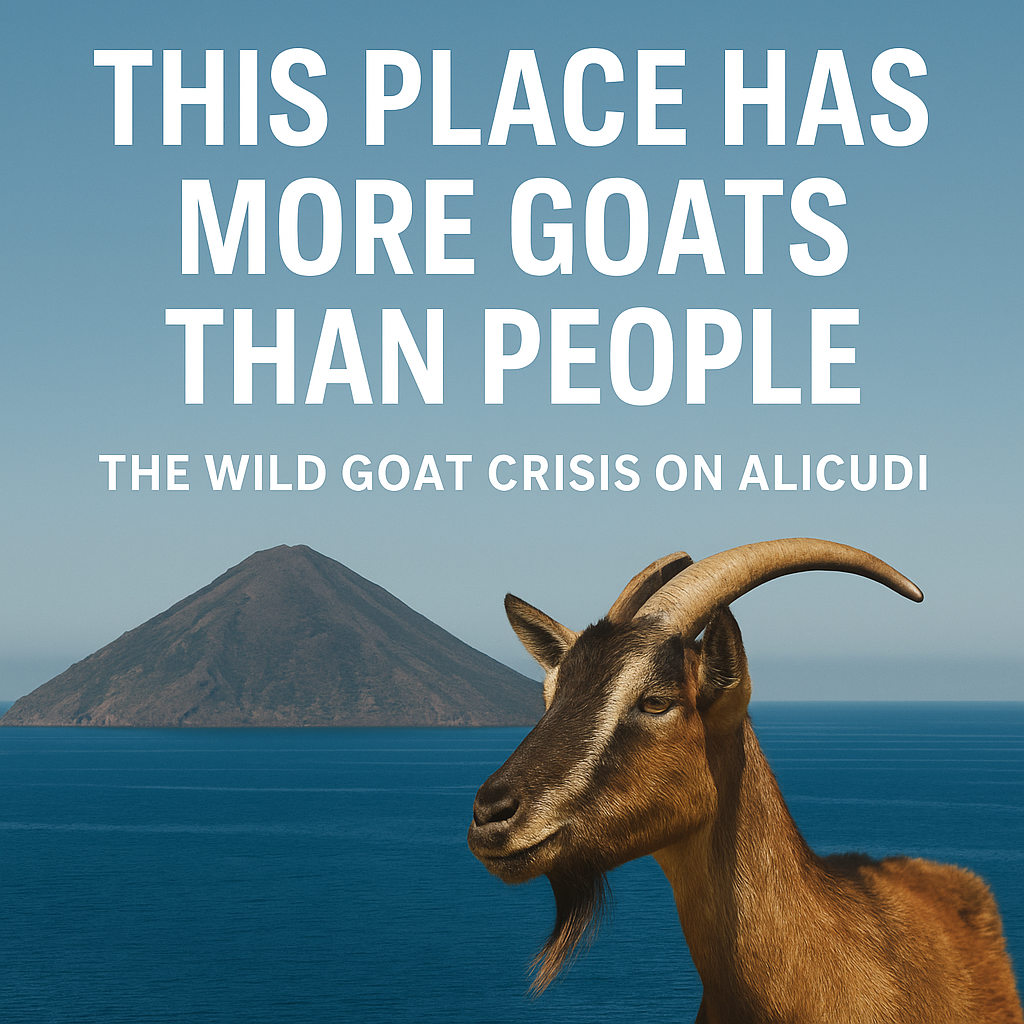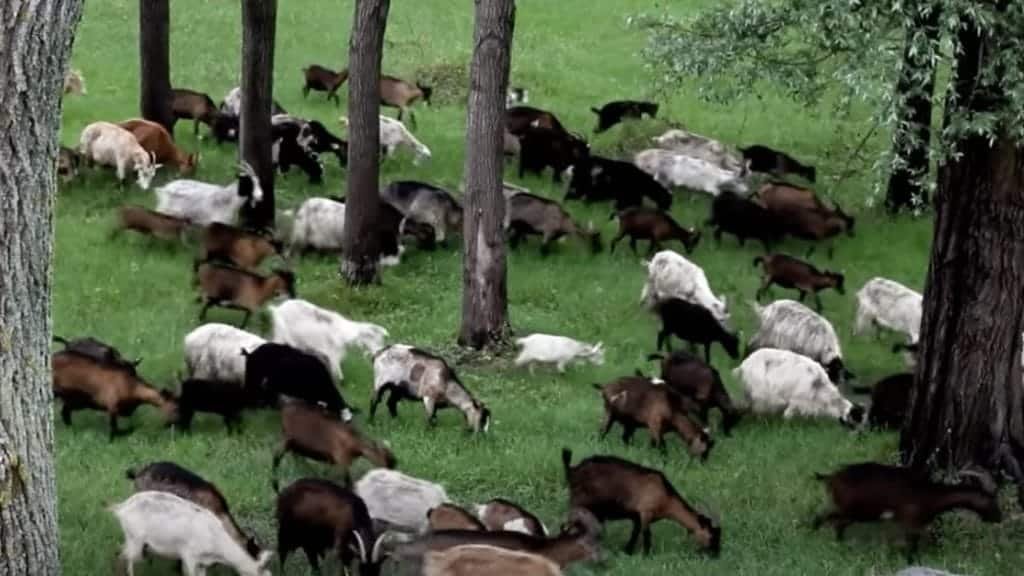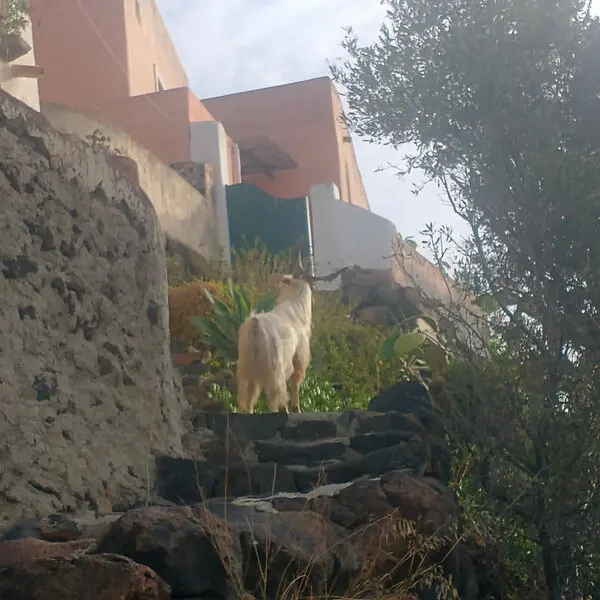Your cart is currently empty!

This Place Has More Goats Than People: The Wild Goat Crisis on Alicudi
Introduction
Imagine living on an island where the goats outnumber people nearly 7 to 1.
That’s the reality for residents of Alicudi, a remote volcanic island off the coast of Sicily. With only about 120 human inhabitants and over 800 wild goats, this tiny paradise has become an unlikely battleground between ecology and overpopulation.
Let’s dive into what’s going on—and what it means for farmers, homesteaders, and nature lovers alike.
Where is Alicudi?
Alicudi is the westernmost of Italy’s Aeolian Islands, located in the Tyrrhenian Sea off the northern coast of Sicily. It’s a rocky, volcanic island shaped by eruptions thousands of years ago, now home to terraced hillsides, stone houses, and steep stairways carved into the mountainside.
There are no cars, no roads, and no nightlife—just walking paths and boats for transport. With no modern infrastructure and a very limited population, Alicudi is both charming and isolated.
Its remoteness is part of the appeal for adventurous travelers, but it also makes managing natural resources and wildlife incredibly difficult. The local economy relies on small-scale agriculture, seasonal tourism, and fishing. In this kind of delicate ecosystem, even small disruptions—like an unchecked goat population—can have massive effects.

How the Goat Boom Began
The goat takeover started about 20 years ago, when a handful of domestic goats were either released or escaped from small-scale local farms. At the time, no one could have predicted the consequences. On an island like Alicudi—with no predators, little human interference, and plenty of rugged terrain—those few goats had everything they needed to thrive.
With abundant food sources and no fencing to contain them, the goats did what goats do best: climb, explore, and multiply. In a matter of years, the population surged.
Locals initially viewed the wild goats as quirky additions to the landscape. Tourists snapped photos of them perched on rooftops or balancing on narrow stone walls. But as the years passed and the herd grew, the novelty wore off—and the damage began to show.
The goats adapted quickly to their environment, becoming elusive, agile, and nearly impossible to round up. Unlike domesticated herds, these animals developed a strong feral streak, scattering at the first sign of humans and taking shelter in inaccessible highlands.
For those curious about goat genetics or fascinated by how different breeds adapt to their environments, this could be a good time to explore rare goat breeds worth knowing. In Alicudi’s case, it wasn’t just the breed—it was the environment that shaped their resilience.
In many ways, the goat population explosion was the result of perfect storm conditions: isolation, lack of regulation, minimal oversight, and a warm, rocky environment ideal for hardy hoofstock.

Why It’s a Problem
What began as a few feral goats has turned into an ecological crisis:
- Loss of biodiversity: The goats are eating everything in sight—from tender saplings to delicate wildflowers. As they strip the landscape bare, native plants are disappearing, and with them, the insects and birds that depend on them.
- Damage to historic structures: The goats often climb or rub against dry-stone walls and ancient terraces that have stood for centuries. These stone features, built without mortar, are now collapsing under the constant pressure of hooves.
- Increased erosion: Without vegetation to hold the soil in place, the island’s already precarious slopes are becoming more prone to erosion. This threatens homes, paths, and gardens.
- Disruption to local life: Tourists and residents have been followed, harassed, or even knocked down by aggressive goats. Imagine walking to your front door and being blocked by a herd of hungry animals. For many, that’s daily life now.
- No food security for farmers: Goats are devouring vegetable gardens, fruit trees, and even potted plants. For islanders trying to grow their own food or sell to visiting tourists, the loss is both personal and economic.
This isn’t just an inconvenience—it’s the slow unraveling of a community that depends on its environment to survive.
What the Government Has Tried
Authorities attempted peaceful solutions:
- A €200,000 budget was offered to remove and rehome goats.
- Locals were invited to adopt them.
- Capture teams tried rounding them up.
In March 2024, officials even launched a highly publicized “Adopt-a-Goat” campaign. The mayor invited people across Italy—and the world—to adopt goats from Alicudi free of charge. The idea took off, with nearly 1,900 applications submitted for just a few hundred goats. It made international headlines and seemed like a win-win solution.
But the logistics proved nearly impossible. The goats were too difficult to catch in the island’s steep, rocky terrain. Transporting them safely required helicopters, veterinary health checks, and ferry coordination. In the end, very few goats were actually removed—and the population continued to grow.
Despite creative efforts, nothing worked. The island’s steep cliffs and narrow paths made rescue missions dangerous and inefficient.
It’s a reminder of how crucial effective fencing and containment tools are. On other farms, modern technology like virtual fencing for goats can help avoid overpopulation and free-roaming issues before they spiral. The island’s steep cliffs and narrow paths made rescue missions dangerous and inefficient.
The Plan to Cull the Herd
With non-lethal options exhausted and the ecosystem on the brink, regional officials have approved a controlled cull of the goat population. This plan, set to begin in October after the peak tourist season, will be carried out by specially trained hunters under strict oversight.
The goal is not to eradicate the goats entirely but to reduce the population to a manageable level—one that won’t continue to destroy the island’s fragile infrastructure and natural beauty. Officials hope this will give the landscape a chance to recover and help prevent the goats from spreading to neighboring islands like Vulcano and Stromboli.
The decision wasn’t taken lightly. It followed years of failed attempts to trap, relocate, or adopt out the goats. The steep cliffs and thick brush made those efforts nearly impossible. Now, the cull is seen as a last-resort solution to a problem that has been allowed to spiral out of control.
Environmental agencies have also pledged to monitor the cull closely and ensure humane practices throughout the process. They’re emphasizing that this is a strategic action designed to preserve both human life and biodiversity.

What Locals Are Saying
The decision to cull the goats has sparked deep debate among Alicudi’s residents and environmental advocates.
Some locals, including long-time residents, feel the cull is necessary. They’ve watched their gardens get destroyed, their walking paths overrun, and their historical walls crumble. These residents argue that the goats have turned from island charmers into aggressive pests. “You can’t grow anything anymore,” one resident said. “They eat everything—flowers, vegetables, trees, even the bark.”
Others, however, are heartbroken by the idea. Resident Elise Collet called the plan “cruel,” and said, “The goats have lived here peacefully for years. It feels wrong to just kill them.” Yet even she acknowledged the devastation they’ve caused: “They’ve eaten everything… so eating them might be part of the solution.”
Animal rights groups are also weighing in, suggesting more investment in relocation or sterilization efforts. But many acknowledge that the logistics of those approaches are challenging, if not impossible, given Alicudi’s terrain and lack of access.
Overall, the community remains divided—but most agree something must be done. The question is no longer if the goat population should be controlled, but how.
What Do You Think?
The Alicudi goat crisis might feel worlds away—but it raises important questions for anyone raising livestock, especially goats:
- What would you do if your herd size suddenly got out of hand?
- Do you think a cull is ever justified when humane methods fail?
- What responsibility do we have to balance animal welfare with environmental protection?
As homesteaders, we’re often the stewards of both animals and the land. So while this isn’t happening in our backyard, it’s a reminder that even small decisions about herd management can have big consequences over time.
We’d love to hear your thoughts—what’s your take on the Alicudi situation?

Leave a Reply